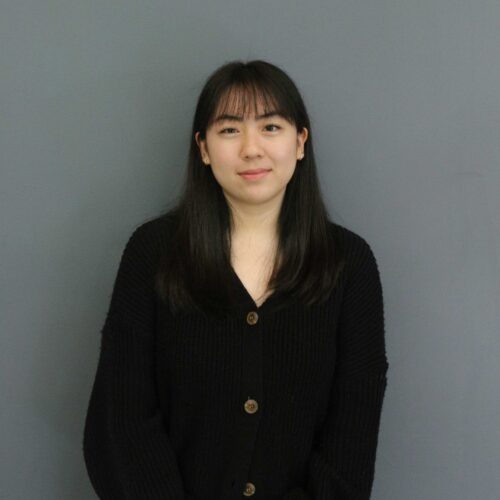When you think of the ocean, what’s the first thing that comes to mind? Perhaps you envision well-known animals like whales or sharks, or the seemingly-endless horizon across the water. Few of us would picture the estimated 25 million underwater mountains rising from the ocean floor, and even fewer would think of the unique and diverse microscopic ecosystems which live on these seamounts.
Ecologically critical yet underrepresented in public knowledge, these underwater microbial communities piqued the interest of two science students at the University of British Columbia. The duo teamed up to enhance the way we understand the ocean and some of its smallest life forms – through a new Wikipedia article for all to read.
“Seamount microbial communities play significant ecological roles that are not well-documented, and we wanted to shed light on their potential impact on oceanic nutrient cycling and biodiversity conservation,” said fourth-year student Alia Kogiso. “This topic offered a unique opportunity to explore an underrepresented area in marine microbiology.”

Kogiso, an Integrated Sciences major with a focus on Environmental Chemistry, Ecology, and Structural Geology, worked with biology major Alyssa Jung to collect, review, and synthesize the related existing literature on the microbial communities. Together they brought the new, robust article to Wikipedia as their final project for Dr. Curtis Suttle’s marine microbiology course this spring.
As the article outlines, seamounts provide a variety of habitats, including rocky surfaces and hydrothermal vents, which support a wide range of microbial life. The microbial communities, characterized by their microbial diversity and adaptability to extreme conditions, such as high pressure, low temperatures, and limited nutrient availability, play crucial roles in nutrient cycling and ecosystem functioning, making them a critical part of ocean life.
“Our main goal was to ensure literature was being well-documented in an easier format than scientific paper,” said Jung, underscoring Wikipedia’s role as the world’s go-to source of information. “We hope that readers get a glimpse of the importance of microbes in an underexplored biodiversity such as seamounts.”

Jung and Kogiso also ensured greater awareness of the implications of microbial communities in seamount ecosystems on biodiversity and ecological productivity, known as the “seamount effect.”
“The seamount effect alters ocean current patterns, enhancing biodiversity and productivity, making these areas crucial for understanding microbial community structures and ecosystems,” explained Kogiso. “We hope that our article helps readers unravel this complexity and inspires further exploration in this field.”
The science students added an impressive 9375 words and 89 references to create the article, contributing to the incredibly impactful work of their class. Collectively, Suttle’s students in the spring 2024 course added 86K words to Wikipedia while creating 10 new articles and enhancing 35 existing articles through their Wikipedia assignments. Their work on Wikipedia has been viewed nearly 500K times.
“I loved this assignment because it allowed us to engage with a wider audience and develop skills in communicating science to the public, which I believe will be invaluable in a professional setting after graduation,” said Kogiso, who plans to pursue a career in environmental consultancy and project management. “This kind of opportunity is often lacking in traditional assignments.”
From scientific research to writing in a neutral, accessible style, both assignment partners noted a range of skills and knowledge they developed throughout the process.
“Writing this article not only enhanced my research skills but also deepened my understanding of marine ecosystems from a microbiological perspective,” said Kogiso, reflecting on her assignment experience. “I learned how to adapt complex scientific information for Wikipedia, which requires unique editorial considerations such as maintaining neutrality and citing reliable sources extensively.”
Echoing her classmate’s reflection, Jung also emphasized the fun of learning new science-related concepts.
“My family is very science-oriented,” Jung explained. “My father always taught me the fundamentals of the scientific method and different topics he was working on – I am glad to have something new to tell him!”
Kogiso particularly enjoyed the collaborative nature of working on Wikipedia, noting both the challenge and pleasure of bringing different perspectives and expertise into a cohesive, unbiased narrative, a process that enhanced her own understanding of the topic.
“The project was meaningful because it allowed me to contribute to a public platform that educates both myself and others, reinforcing my passion for environmental science and biology,” said Kogiso, who plans to continue to edit Wikipedia.
Like Kogiso, Jung also emphasized her interest in editing Wikipedia in the future as topics and new research catch her eye. Jung plans to pursue a career in secondary education, bringing her biology expertise to the high school classroom.
Our support for STEM classes like Alia’s and Alyssa’s is available thanks to the Guru Krupa Foundation.
Interested in incorporating a Wikipedia assignment into your course? Visit teach.wikiedu.org to learn more about the free resources, digital tools, and staff support that Wiki Education offers to postsecondary instructors in the United States and Canada.
